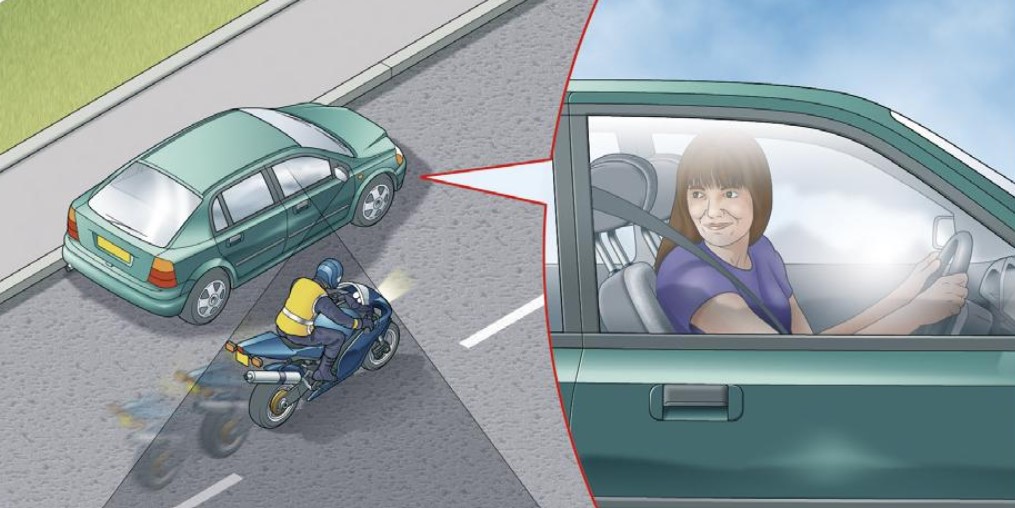
Blind spots are just as likely to affect drivers who want to move off from a stationary position as drivers who are moving. Regular and sensible use of your mirrors will keep you up to date with what’s happening behind. But remember to check your blind spots before you decide to take any action. Use the Dutch Reach, a simple technique that ensures you always look over your shoulder to avoid opening doors into the path of people who cycle or use motorcycles.
Moving off
If you’re moving off from a stationary position, check your mirrors and check your blind spot by looking over your right shoulder. If you’re still uncertain, wind down your window and double check.
This is especially important when parallel parked on a road. If you’re parked up on the right-hand side of the road, you’ll need to check your blind spot over your left shoulder instead. When reversing, remember to use all your mirrors and check your blind spots, Highway Code NI Rule 202.
Junctions and roundabouts
This also applies for pulling away at junctions and roundabouts, where traffic and other road users can come from multiple directions. Remember that people walking, riding on a motorcycle or bicycle may be passing on either side of your vehicle. Check your left blind spot as you exit a roundabout to make sure the route is clear.
Motorways
If you’re moving at speed, always take a quick sideways glance to check your blind spot before you merge onto a motorway, dual carriageway, or major road from a slip road. Some smaller vehicles might be matching your speed in the blind spot between your wing mirror’s coverage and your eye’s peripheral vision of the window.
Check your blind spot before changing lanes once you’re on the motorway. Put your indicator on, check your mirrors, check your blind spot, then merge only once you’re confident that the way is clear. Remember, you might be in another road user’s blind spot.
Follow us on Facebook, X and Instagram for daily road safety advice and Highway Code Rules.